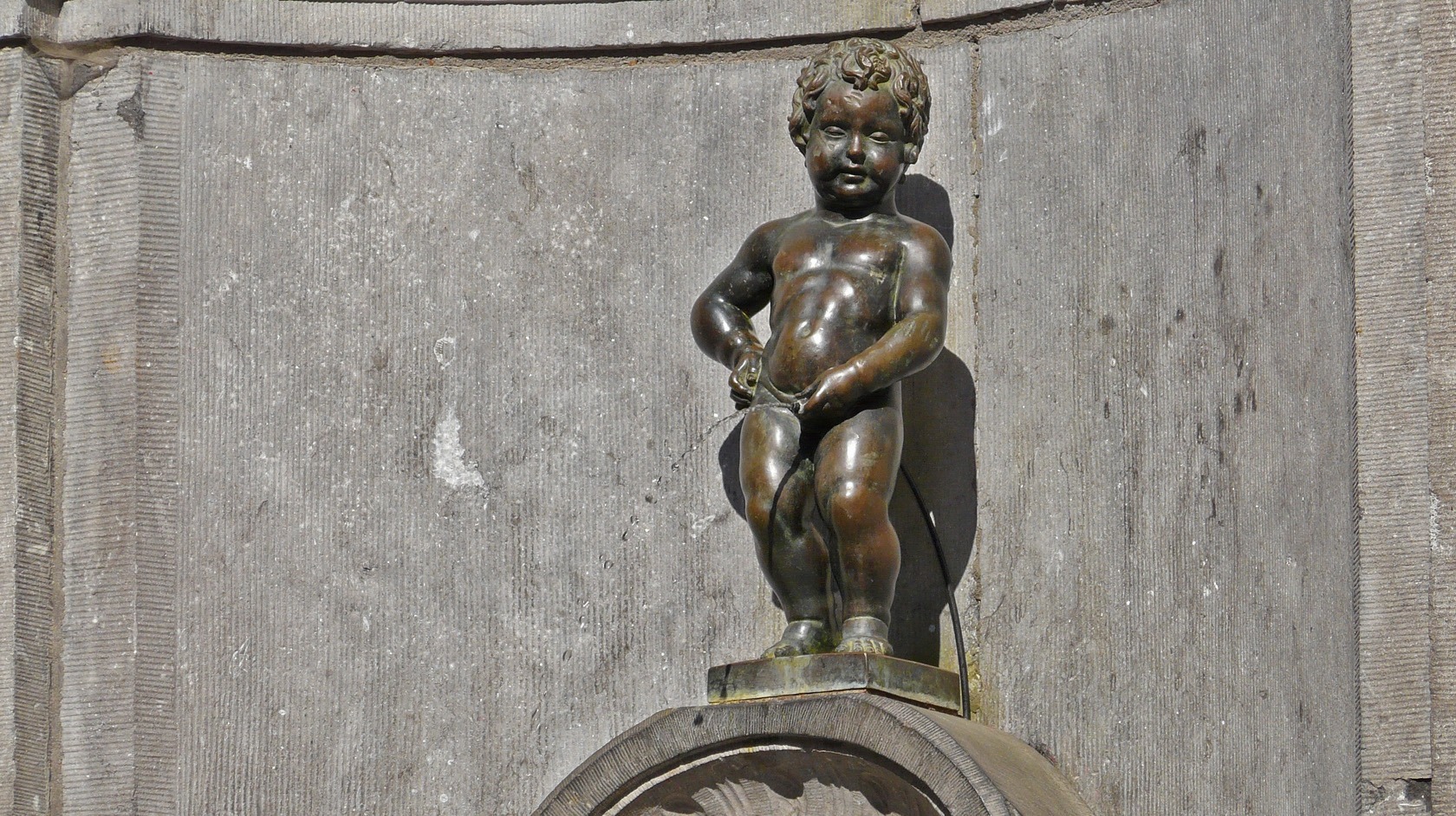Manneken-Pis, literally “little man pee,” in the Dutch dialect of Marols or “le petit Julien,” in French, is one of Brussels’ most famous and beloved citizens. But what’s the story behind this iconic, if tiny, figure?
These days, the statue has become something of a cliche--recreated on t-shirts and beer labels around the world. At its origins, however, the famous Manneken-Pis is practical in purpose, with a little bit of whimsy thrown in for good measure.
The statue of the “pissing boy,” as he is commonly called, has led a long and not always easy life, surviving the bombardment of Brussels in 1695 and various wear and tear over the centuries. According to local records, the fountain, located at the intersection of Rue de l'Étuve/Stoofstraat and Rue du Chêne/Eikstraat, was used as early as the 15th century to help distribute drinking water across the city.
For tourists, the statue is high on the list for places to visit, but for many locals the meaning is much deeper. To some, the fountain has come to symbolize a certain spirit of Brussels that is both steadfast, playful and highly individual. Though the statue is no longer used for water distribution, it has come to nourish the city in a new way--providing entertainment and a sense of play. It also reminds residents of the city’s rich history and perpetually evolving identity.
Still today, and since the 18th century, the little statue is dressed up to mark special occasions and festivals. You never know what you might find “little man pee” masquerading as the next time you walk by.
As for the little boy who served as inspiration for the statue? This is where legend tends to overshadow facts. One tale maintains that the statue is a likeness of a boy who saved Brussels from fire and disaster by peeing on the fuse of an explosive; another story depicts the boy as the victim of a witch’s spell, frozen in time as punishment for peeing on her door. Whatever the case may be, the statue is likely here to stay--snapshot fodder for the many visitors who visit the city each year, and a good reminder of humor and history for the city’s lucky inhabitants.
By Marie Doezema
The Brussels Times

